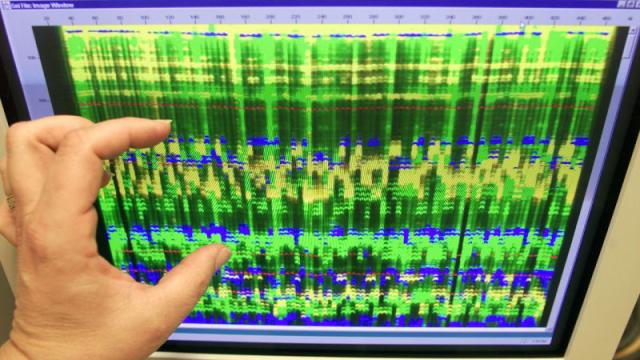In the not-so-distant future, next time you want to back up your work to Microsoft’s cloud, you might be storing it on a few snippets of DNA.
DNA data on a computer monitor. Image: AP
Over the past six years, scientists have turned to the double helix in hopes that it might one day become a more efficient storage medium for things beside hair and eye colour. In 2011, Harvard University geneticist George Church pioneered the idea, encoding his own book, some images and a Javascript program into the molecules. Last July, a team from Microsoft and University of Washington managed to store a record 200 megabytes of data in DNA. And this year, researchers encoded DNA with an 1895 French film, a computer virus and a $US50 ($67) Amazon gift card.
Now Microsoft is hoping to take the technology commercial. The company told the MIT Technology Review that it plans to have operational storage system based on DNA up and running inside a data centre by the end of the decade.
The company declined a request from Gizmodo for more details. But Microsoft Research architect Doug Carmean told the Tech Review that the eventual device would be the size of a large, 1970s-era Xerox copier. He also said the company plans to brand it as “Your Storage with DNA”. Within three years, they plan to have a “proto-commercial system” at one data centre storing data for “at least a boutique application”.
DNA as a storage medium makes a lot of sense — just think about all the information about you your DNA stores in a teeny, tiny amount of space. It is compact and durable, and is unlikely to ever go obsolete. And it works a lot like the hardware we use to store things on already, with code written in As, Gs, Cs and Ts rather than 1s and 0s.
But there are some major hurdles to overcome before the technology breaks into the mainstream. For one, DNA sequencing is getting cheaper by the day, but it’s still far too expensive to replace your flash drives. This year, Illumina announced plans to bring the cost of sequencing an entire human genome sequencing down to $US100 ($134) within a decade. How much that cost drops and how quickly will play a large part in how quickly DNA data storage is adopted.
Microsoft’s announcement signals an interest in make those advancements happen as quickly as possible, as the technology of tomorrow commands an increasing amount of storage space and computing power. Time will tell whether we’re uploading our files to strands of genetic code in five years, but stranger things have happened.
